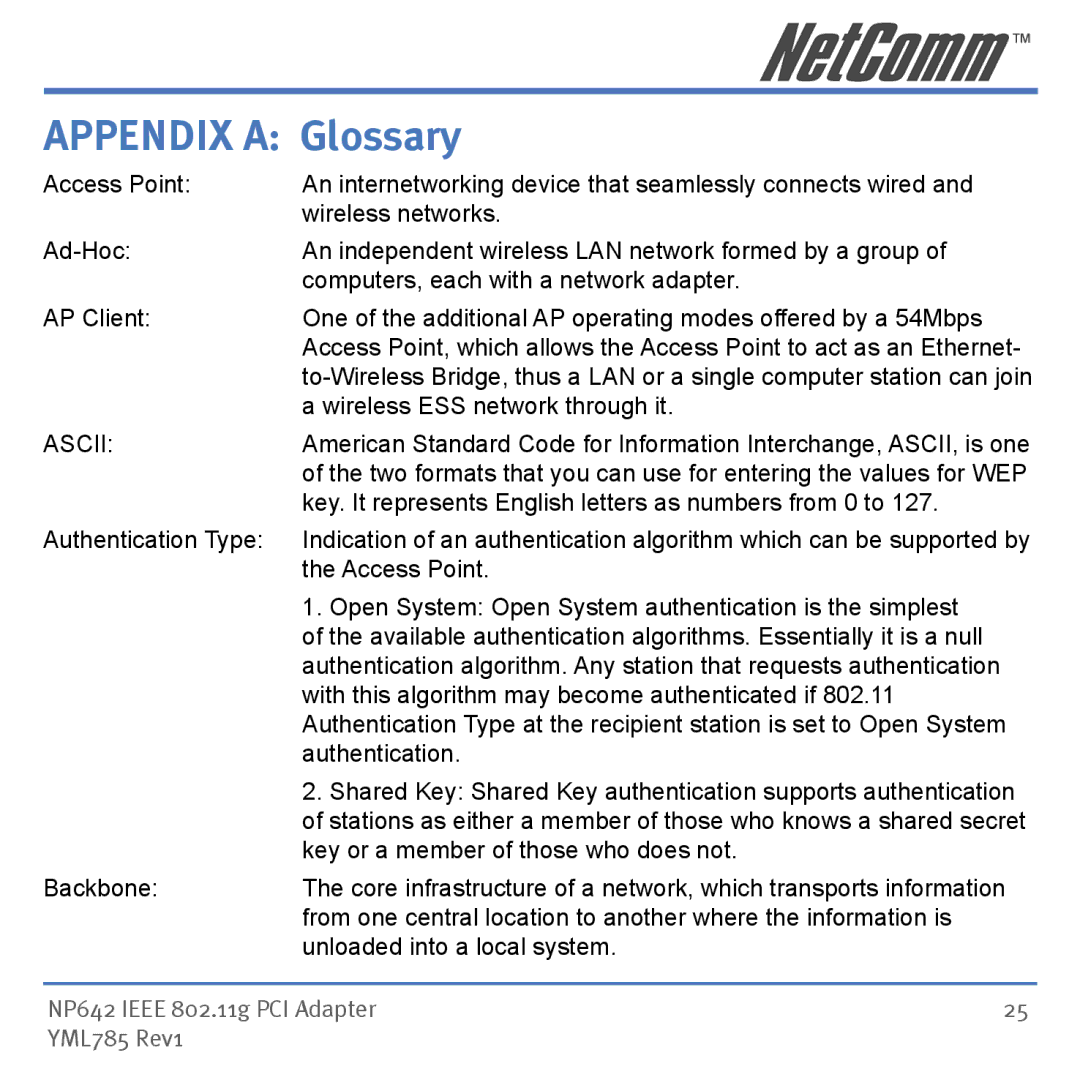APPENDIX A: Glossary
Access Point: | An internetworking device that seamlessly connects wired and |
|
| wireless networks. |
|
An independent wireless LAN network formed by a group of |
| |
| computers, each with a network adapter. |
|
AP Client: | One of the additional AP operating modes offered by a 54Mbps |
|
| Access Point, which allows the Access Point to act as an Ethernet- | |
| ||
| a wireless ESS network through it. |
|
ASCII: | American Standard Code for Information Interchange, ASCII, is one | |
| of the two formats that you can use for entering the values for WEP | |
| key. It represents English letters as numbers from 0 to 127. |
|
Authentication Type: | Indication of an authentication algorithm which can be supported by | |
| the Access Point. |
|
| 1. Open System: Open System authentication is the simplest |
|
| of the available authentication algorithms. Essentially it is a null |
|
| authentication algorithm. Any station that requests authentication |
|
| with this algorithm may become authenticated if 802.11 |
|
| Authentication Type at the recipient station is set to Open System | |
| authentication. |
|
| 2. Shared Key: Shared Key authentication supports authentication | |
| of stations as either a member of those who knows a shared secret | |
| key or a member of those who does not. |
|
Backbone: | The core infrastructure of a network, which transports information | |
| from one central location to another where the information is |
|
| unloaded into a local system. |
|
|
| |
NP642 IEEE 802.11g PCI Adapter | 25 | |
YML785 Rev1 |
|
|
